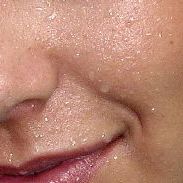Perspiration, commonly known as sweating, is a natural bodily function essential for regulating body temperature and maintaining overall health. This process involves the release of fluid from sweat glands located in the skin, primarily in response to factors such as physical activity, environmental temperature, emotional stress, and hormonal changes. Understanding the mechanisms, benefits, and variations of perspiration is crucial for appreciating its significance in human physiology.
Mechanisms of Perspiration
Sweating is primarily controlled by the autonomic nervous system, specifically the sympathetic nervous system. When the body temperature rises above a set point, signals are sent to the sweat glands to produce sweat. Sweat is composed mainly of water, electrolytes (such as sodium and chloride), and small amounts of waste products. As sweat evaporates from the skin’s surface, it dissipates heat, cooling the body and helping to maintain a stable internal temperature.
Benefits of Perspiration
Perspiration plays a vital role in thermoregulation, preventing overheating during physical exertion or exposure to high temperatures. By releasing heat through evaporation, sweating helps prevent heat-related illnesses like heat exhaustion and heatstroke. Additionally, sweating aids in detoxification by eliminating waste products and toxins from the body. It also contributes to maintaining skin hydration and promoting skin health by flushing out impurities and regulating pH levels.
Variations in Perspiration
Individuals vary in their sweating patterns due to factors such as genetics, age, fitness level, and environmental conditions. Some people naturally sweat more or less than others, which can be influenced by hormonal imbalances or medical conditions like hyperhidrosis (excessive sweating) or anhidrosis (lack of sweating). Sweat composition can also differ based on hydration status, diet, and overall health. Furthermore, emotional sweating triggered by stress or anxiety differs from thermoregulatory sweating in response to heat.
Managing Perspiration
Proper hygiene practices are essential for managing perspiration effectively. Regular bathing with mild soap helps remove sweat and bacteria from the skin, reducing body odor. Wearing breathable clothing made from natural fibers like cotton can help absorb moisture and promote air circulation. Antiperspirants containing aluminum compounds can temporarily block sweat ducts and reduce perspiration. In cases of excessive sweating, medical treatments like prescription antiperspirants, iontophoresis, botulinum toxin injections (Botox), or even surgery may be recommended.
Conclusion
Perspiration is a fundamental physiological process that serves multiple functions beyond cooling the body. Understanding the mechanisms behind sweating, its benefits for thermoregulation and detoxification, as well as variations in sweating patterns among individuals, is crucial for maintaining overall health and well-being. By adopting proper hygiene practices and seeking appropriate treatments when necessary, individuals can effectively manage perspiration while appreciating its essential role in human physiology.
Citations:
[1] https://en.wikipedia.org/wiki/Perspiration
This article about biology may be excessively human-centric. |
Perspiration, also known as sweat, is the fluid secreted by sweat glands in the skin of mammals.
| Perspiration | |
|---|---|
| Other names | Sweating, hidrosis, diaphoresis |
 | |
| Droplets of perspiration on the skin | |
| Specialty | Dermatology |
| Symptoms | Body odor |
| Complications | Dehydration |
| Causes | Exercise Fever Heat Hyperthermia Hot flash |
| Prevention | Drinking water |
| Treatment | Antiperspirant |
Two types of sweat glands can be found in humans: eccrine glands and apocrine glands. The eccrine sweat glands are distributed over much of the body and are responsible for secreting the watery, brackish sweat most often triggered by excessive body temperature. Apocrine sweat glands are restricted to the armpits and a few other areas of the body and produce an odorless, oily, opaque secretion which then gains its characteristic odor from bacterial decomposition.
In humans, sweating is primarily a means of thermoregulation, which is achieved by the water-rich secretion of the eccrine glands. Maximum sweat rates of an adult can be up to 2–4 litres (0.53–1.06 US gal) per hour or 10–14 litres (2.6–3.7 US gal) per day, but is less in children prior to puberty. Evaporation of sweat from the skin surface has a cooling effect due to evaporative cooling. Hence, in hot weather, or when the individual's muscles heat up due to exertion, more sweat is produced. Animals with few sweat glands, such as dogs, accomplish similar temperature regulation results by panting, which evaporates water from the moist lining of the oral cavity and pharynx.
Although sweating is found in a wide variety of mammals, relatively few (apart from humans, horses, some primates and some bovidae) produce sweat in order to cool down. In horses, such cooling sweat is created by apocrine glands and contains a wetting agent, the protein latherin which transfers from the skin to the surface of their coats.
English
Etymology
Borrowed from late Middle French perspiration, from perspirer (“perspire”), from Latin perspirare (“to blow or breathe constantly”), from per (“through”) + spirare (“to breathe, blow”) Morphologically perspire + -ation
Pronunciation
- (Received Pronunciation) IPA(key): /ˌpɜːspəˈɹeɪʃən/
- (General American) IPA(key): /ˌpɝspəˈɹeɪʃən/
- Rhymes: -eɪʃən
- Hyphenation: per‧spi‧ra‧tion
Noun
perspiration (usually uncountable, plural perspirations)
- The action or process of perspiring.